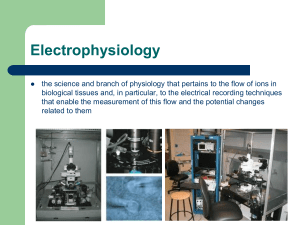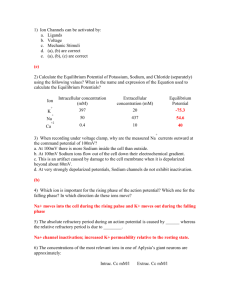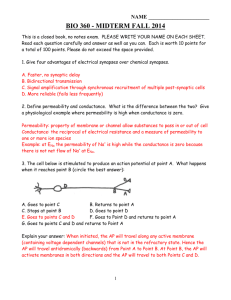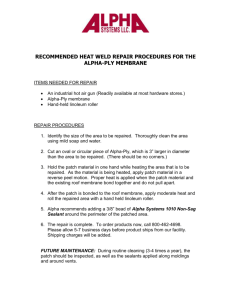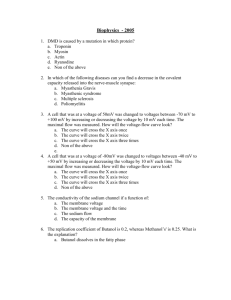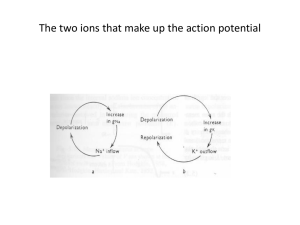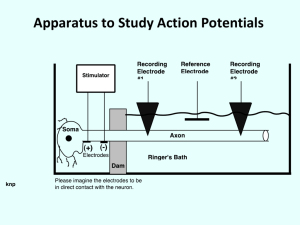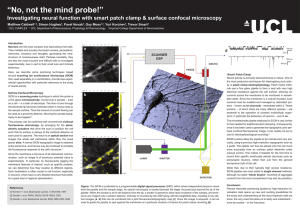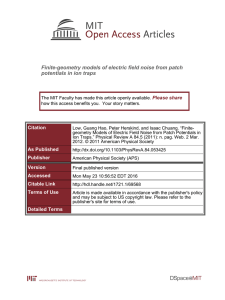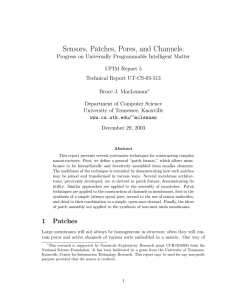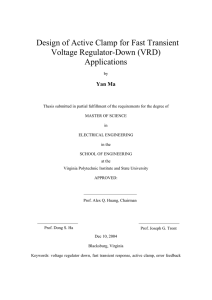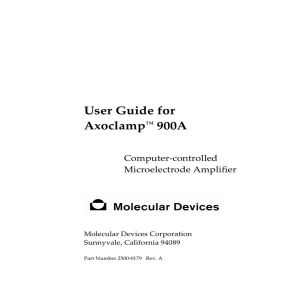4-Calculate the Equilibrium Potential of Potassium, Sodium, and
advertisement
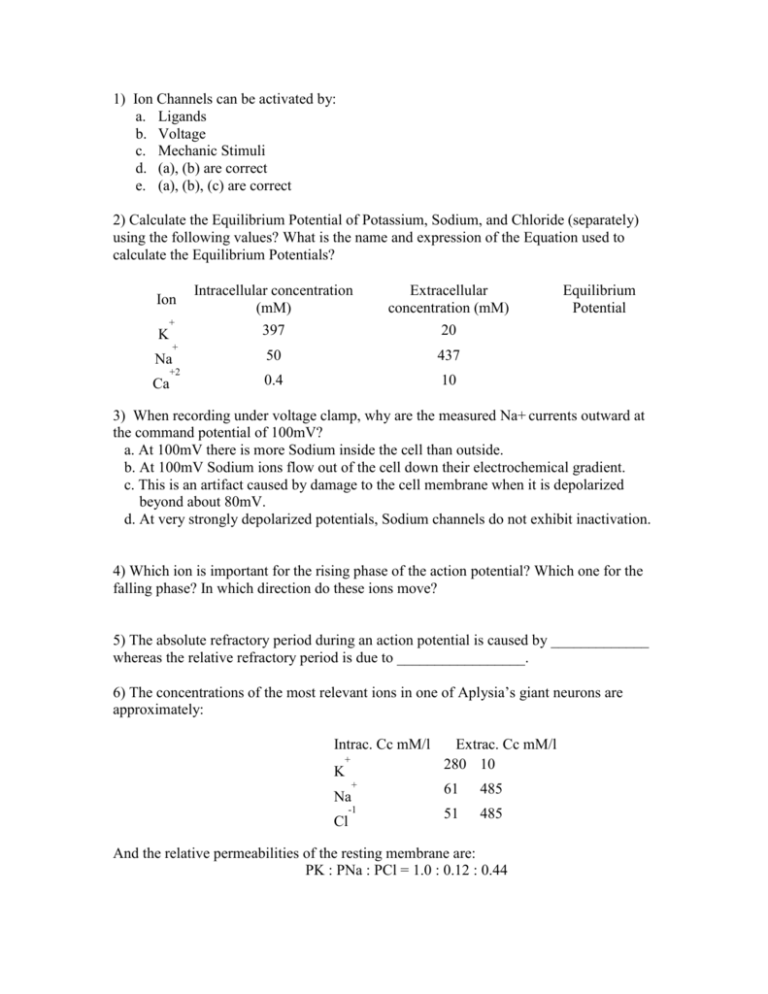
1) Ion Channels can be activated by: a. Ligands b. Voltage c. Mechanic Stimuli d. (a), (b) are correct e. (a), (b), (c) are correct 2) Calculate the Equilibrium Potential of Potassium, Sodium, and Chloride (separately) using the following values? What is the name and expression of the Equation used to calculate the Equilibrium Potentials? Ion + K + Na +2 Ca Intracellular concentration (mM) 397 Extracellular concentration (mM) 20 50 437 0.4 10 Equilibrium Potential 3) When recording under voltage clamp, why are the measured Na+ currents outward at the command potential of 100mV? a. At 100mV there is more Sodium inside the cell than outside. b. At 100mV Sodium ions flow out of the cell down their electrochemical gradient. c. This is an artifact caused by damage to the cell membrane when it is depolarized beyond about 80mV. d. At very strongly depolarized potentials, Sodium channels do not exhibit inactivation. 4) Which ion is important for the rising phase of the action potential? Which one for the falling phase? In which direction do these ions move? 5) The absolute refractory period during an action potential is caused by _____________ whereas the relative refractory period is due to _________________. 6) The concentrations of the most relevant ions in one of Aplysia’s giant neurons are approximately: Intrac. Cc mM/l + K + Na -1 Cl Extrac. Cc mM/l 280 10 61 485 51 485 And the relative permeabilities of the resting membrane are: PK : PNa : PCl = 1.0 : 0.12 : 0.44 What is the value of the resting potential, as estimated using the GHK equation? 7) In the circuit model of a neuron, channels are represented as conductances, the electromotive forces as batteries and the cell membrane as a capacitance. (a) Draw the equivalent circuit for a neuron containing Sodium and Potassium Channels. (b) Calculate the resting potential of the cell in the steady state (i.e. when the capacitor has already been charged, and thus can be ignored). + -6 + -6 gNa =0.5x10 S ; gK =10x10 S ; ENa= 55mV ; Ek= -75mV 8) Define and explain the space constant. What does it depend on? 9) Mark True or False: a. Action potential conduction down the axon involves passive current flow. b. Poisoning the Na-K ATPase pump in a neuron would lengthen the refractory period. c. Oligodendrocytes secrete the myelin that surrounds the neurons in the peripheral nervous system. d. While action potential conduction is in ‘jumps’ (Saltatory Conduction) in myelinated axons, conduction in non-myelinated axons is continuous. 10) match the technique to the desired experiment: a) examining currents in post synaptic cell ________ b) examining conductance of single ion channel ________ c) examine effect of squirting protease on inside of channel ________ d) examine quantal synaptic events ________ 1- stimulate presynaptic cell with low [Ca2+] extracellular solution 2- whole-cell voltage clamp 3- inside-out patch clamp 4- patch clamp (in voltage clamp) 11)- Define/Explain: a. Synaptic Cleft – b. Neurotransmitter c. Chemical synapse – d. Electrical synapse – e. Neuro-Muscular Junction – f. Quanta. (in relation to synaptic transmission) 12) These are the recordings obtained from a patch of membrane that contained a single channel. During the experiment the concentration of the ion that this channel is selective for was kept constant and equal on both sides of the channel, and the voltage across the patch was changed systematically. a) Draw the IV-curve for this channel in these conditions. b) Estimate the channel’s conductance. (Be careful with the units). 13) You are conducting experiments with a patch-pipette in the cell-attached conformation. With this configuration, you can change the membrane voltage for that patch and record the current that flows through that patch. You do the experiment in 3 different patches (A, B, C) and obtain the following results: Note: This is a QUALITATIVE problem, so do not focus on the exact numbers (if you tried to do an IV curve with these data points, it would look very weird), just look at general trends. a) How can you explain the results for experiment A? How could you test this hypothesis? (all suggestions are welcome) b) What type of channel did you have in your patch in cases B and C? What additional voltage step should you have done in each of those experiments to be sure? What would you expect to see in each case?

